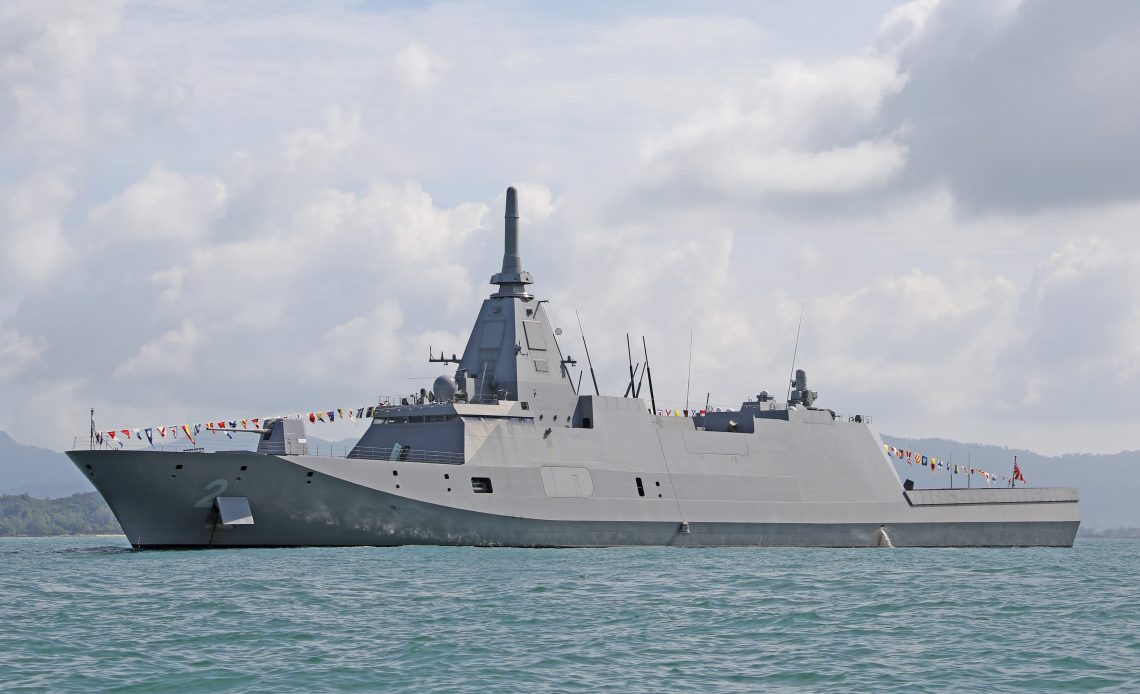
Japan has struggled to export cutting-edge defense equipment. However, past disappointments have been turned on their head after Japan navy won selection for a lucrative Australian frigate requirement worth up to US$6.5 billion.
With its shortlisting confirmed by Canberra on Aug. 5, Japan’s Ministry of Defense immediately tweeted that “we welcome this decision as it marks a major step toward elevating our security cooperation as ‘Special Strategic Partner’ to even greater heights.”
The Royal Australian Navy – or RAN for short – plans to procure 11 well-armed upgraded Mogami-class frigates. The Japanese platform emerged the victor after a fierce contest with the MEKO A-200 frigate from Germany.
“Following a rigorous and competitive tender process, Mitsubishi Heavy Industries’ Mogami-class frigate was assessed as best able to quickly meet the capability requirements and strategic needs of the Australian Defence Force,” Australia’s DOD said in a press release.
It is not a done deal yet, as negotiations now start “with the aim to enter early into binding, commercial contracts with Mitsubishi Heavy Industries (MHI) and the government of Japan in 2026,” according to the statement.
Nor is this frigate program without significant risk.
One peril stems from the fact that the upgraded Mogami does not yet exist. It is a modified version of the Mogami class, of which Japan’s navy will soon have a dozen. On June 19, Japan commissioned its eighth such frigate, valued at JPY47.4 billion (US$332 million).
After completing these warships, Japanese attention shifts to 12 upgraded Mogami frigates from Fiscal Year 2028. MHI received a contract for the first two in May.
Discussing this yet-to-be-built platform, Jennifer Parker, a defense expert at the Australian National University, noted in the Australasian university-affiliated website, The Conversation, that “this risk is mitigated, however, by Japan’s fantastic track record in building ships.”
However, the nascent upgraded Mogami leads to another risk factor, that of schedule. Canberra said the first Japanese-built frigate would be delivered in 2029 and enter service in 2030. The plan calls for the first three ships to be built in Japan, before construction transfers to Western Australia.
Yet Australian shipbuilders have accrued a poor record in meeting schedules. With existing shipbuilding programs already running well behind schedule, there is already speculation that Japan might end up constructing more than three frigates at home.
Another difficulty arises because the upgraded Mogami class has little commonality with the RAN’s outgoing Anzac class or the BAE Systems Hunter class that is slated to arrive in 2034.
An additional risk factor is that MHI has never built naval vessels overseas before. In recent times, Australian pickiness has rankled shipbuilders such as Naval Group of France and Luerssen of Germany.
This prompted Parker to warn, “The danger with this frigate deal is that it could damage our relationship if something doesn’t go right.”
Nonetheless, the Japanese government is extremely committed to this program, rating its strategic partnership with Australia as second only to that with the U.S.
As Australian Defence Minister Richard Marles pointed out, “This does represent a very significant moment in the bilateral relationship between Australia and Japan.”
The RAN desperately needs these new frigates to replace its retiring Anzac class. In fact, the navy’s surface combatant fleet will reach a nadir of nine warships next year, the lowest it has been since World War II.
While the government plans to lift the warship fleet to 26 hulls, Parker pointed out to Defense News, “Most predict an increased period of risk in the late 2020s, and that’s where Australia has the capability gap.”
As for its capabilities, the upgraded Mogami displaces 4,800 tons, which is 700 tons more than its predecessor. At 466 feet, it is also 30 feet longer.
The new frigate features a 32-cell vertical launch system, which is double the magazine capacity that its MEKO A-200 rival could offer. Additionally, it possesses a design life of 40 years.
In a press release, MHI said it believed Australia’s decision was based on the Mogami’s “proven performance, reliability, technology, capabilities, multi-functionality … as well as reduced manpower requirements compared to conventional frigates, and scalability to easily enhance capabilities in the future.”
Author: Gordon Arthur
Source: DefenseNews
Reviewed By: Editorial Team



